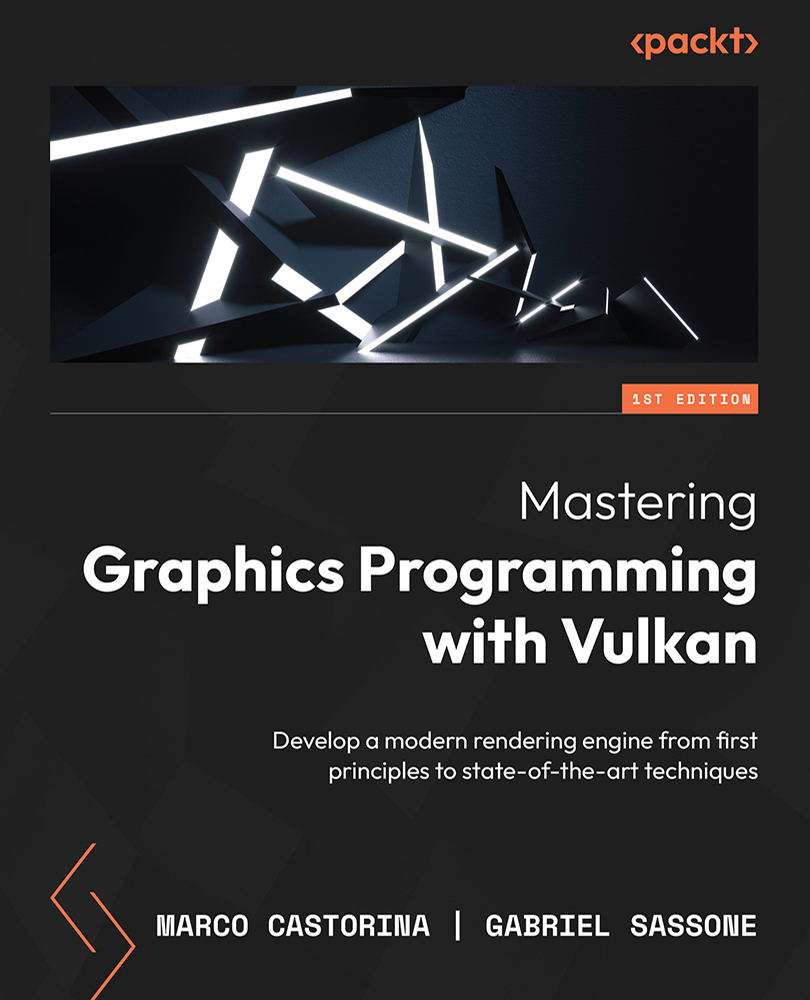Improving ray-traced shadows
In the previous section, we described a simple algorithm that can be used to compute the visibility term in our scene. As we mentioned, this doesn’t scale well for a large number of lights and can require a large number of samples for different types of light.
In this section, we are going to implement a different algorithm inspired by the article Ray Traced Shadows in the Ray Tracing Gems book. As will be common in this chapter and upcoming chapters, the main idea is to spread the computation cost over time.
This can still lead to noisy results, as we are still using a low number of samples. To achieve the quality we are looking for, we are going to make use of spatial and temporal filtering, similar to what we did in Chapter 11, Temporal Anti-Aliasing.
The technique is implemented over three passes, and we are also going to leverage motion vectors. We are now going to explain each pass in detail.
Motion vectors
As we saw in Chapter...


























































